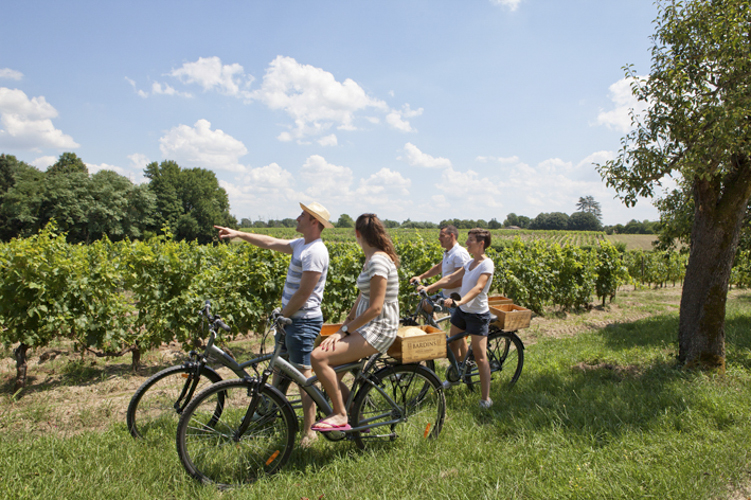
Introduction
Bordeaux wines may be renowned across the globe, but increasingly, international wine lovers are planning trips right here in the picturesque vineyards and ancient château cellars where unique vintages have been made for over 2,000 years. And each experience is different. You can to choose to stay in a rustic vigneron’s bed&breakfast and join the winemaker at sunset as he pulls the cork of his latest vintage of Bordeaux Supérieur and slices up a tasty saucisson for a simple but delicious pairing. Or choose the pomp and splendour of the historic châteaux of the Médoc, where a wine expert will lead you through an extensive tasting of different years on one of the original Crus Classés 1855, followed by an exquisite gourmet meal in a gastronomic Michelin-starred restaurant.
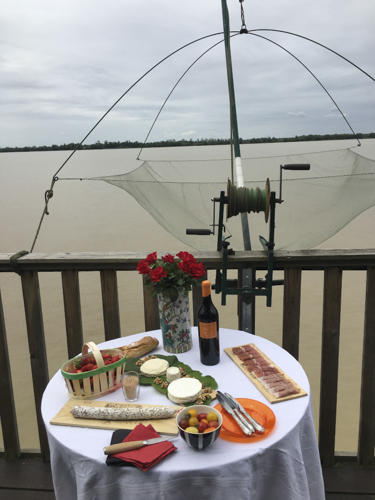
These are just two examples of a hundred different possible adventures that Bordeaux offers today. Fly in a small plane with the winemaker piloting you above his vineyards, take part in a blending atelier to understand the qualities of different grapes, book a wellness session of vinotherapy, grape massages and beauty treatments, sleep in a luxurious medieval château or enjoy a fun glamping night in a converted giant barrel. Everyone’s journey starts in the city of Bordeaux, one for the most exhilarating world wine capitals, where a day spent in the futuristic Cité du Vin museum is the perfect introduction to the world of wine and the possibilities awaiting in the Bordeaux region. There are a host of organised tours to choose from, where experts will plan every step of your trip, from exploring the vineyards to tasting with cellar masters. But there is another way to make your own discoveries. Hire a car, be sure to make winery reservations in advance for a visit, and head off the beaten track following your very own Bordeaux wine trail, with a selection of some of the top addresses below.
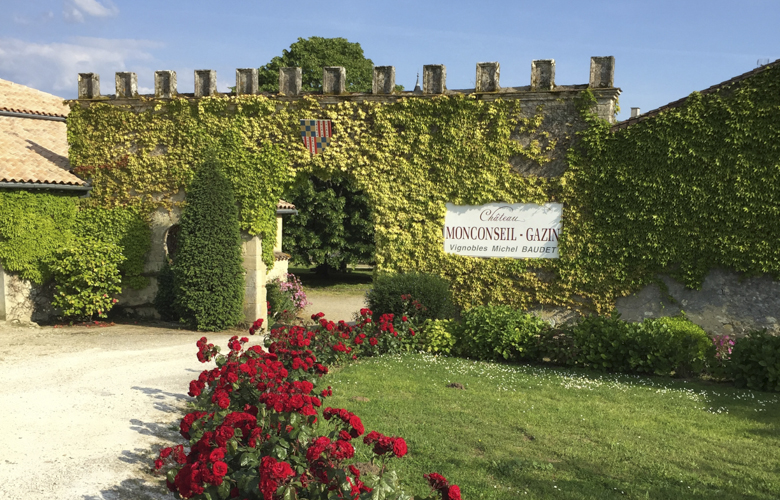
The ivy-clad medieval gateway of this rambling 14th century château is the entrance to a whole new world of wine adventures thought up by the inventive fifth generation owners, Jean-Michel and Françoise Baudet. They have a 30 hectare vineyard producing annually over 150,000 bottles of Blaye Côtes de Bordeaux, and aim to sell as much as possible direct from their cellar, coming up with a host of ideas to attract people here.
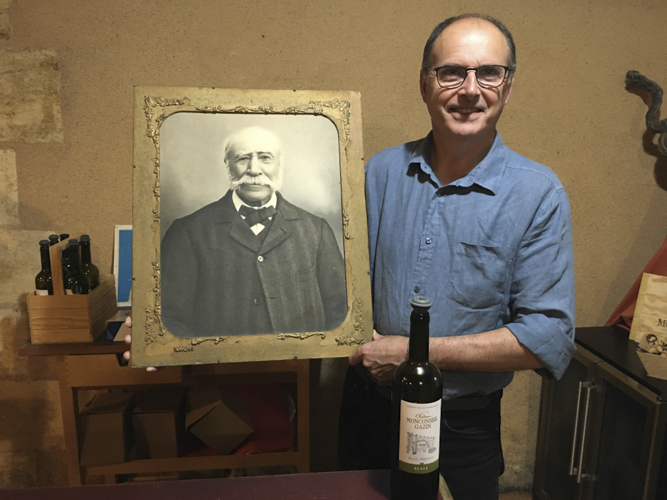
Inspired by his father, who was one of the first Blaye vignerons to offer cellar tasting, Jean-Michel recalls how, “wine enthusiasts today are always looking for something new. As well as tasting, they want to be entertained, educated and discover the countryside. So we began in 2000 with our Initiation aux Vendanges, where visitors join the wine harvest and enjoy a meal and tasting afterwards. Then we started hosting wine dinners in the château, ateliers for cheese pairing, blending workshops. And in 2018, we launched our own Escape Game, inspired by Emperor Charlemagne who fought a famous battle just nearby. We had a big empty cellar and barn, learnt about the Escape Game concept and thought – why not? The experience is bilingual, lasts an hour and is led by a Game Master – my wife Françoise. The theme of course is our Blaye wine, but with lots of enigmas that must remain secret.
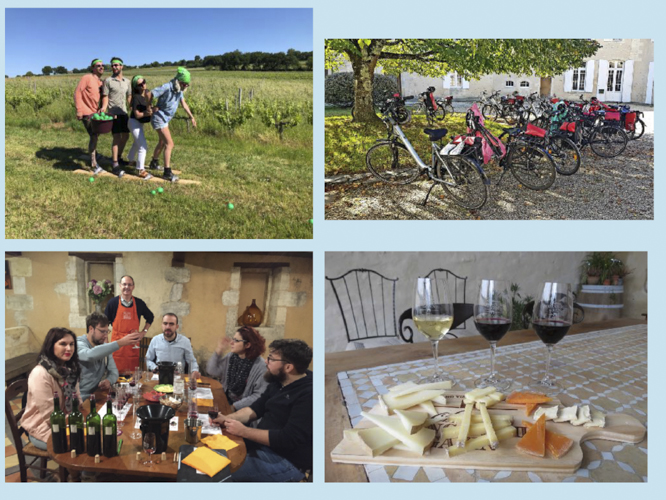
Finally, this year we launched the Wine Olympics – the 12 Tasks of Bacchus – with two teams competing in crazy outdoor events like barrel rolling.”And Jean-Michel is philosophical when he advises other winemakers that, “the key to wine tourism success is that everyone must be welcomed with the same enthusiasm, because a client may buy just 2 bottles but then become a regular for 20 years, while the one who buys 24 bottles you may never see again.”
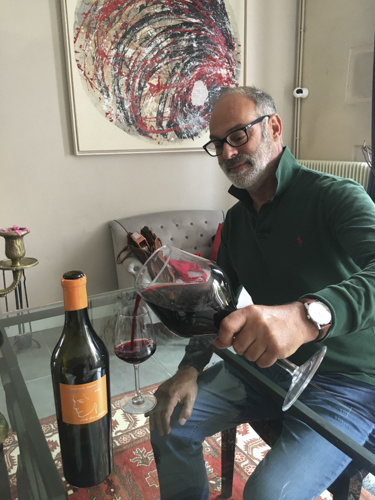
Paul-Henry Nerbusson has arranged an elegant tasting room inside his grand 18th century château, but admits that, “to be honest, if a couple of wine lovers pass by then I am just as relaxed to invite them into my sitting room, decorated with my favourite artworks, to open a bottle to share and explain our different cuvées. Here in the Blaye vineyards of Bordeaux, it is easy to produce a young, drinkable wine, but that is not why I came here. Since I bought the estate 20 years ago my ambition has always been to make quality, aged wines, increasing the vineyard from 2 to 12 hectares, investing heavily in the cellar with new oak barrels, giant wooden ‘foudre’ casks, and terracotta amphorae for the special cuvées named after my children.” This attitude is typical of the personal touch he puts to a series of wine tourism initiatives. “We have a gîte on the estate where people can stay, organise art exhibitions and events in our luxuriant garden for up to 50 people. And recently I had the chance to buy a traditional ‘carrelet’, this is the name of the square net that is lowered down from the tiny wooden cabins along the bank of the Garonne river. Once in the water, you just wait for the fish to swim in!
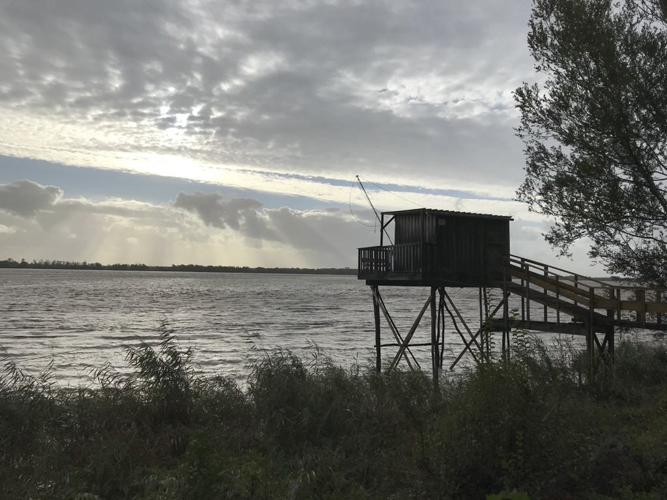
But I did not buy if for fishing, rather as the perfect location to taste our wines. It is a lovely 5 minute drive along the river from the château. We pack a picnic to accompany the wine – simple sharing plates of local cheese, charcuterie and fruits – and a wooden walkway takes you across the water into the cabin which stands on stilts. I think with wine you must make people dream to appreciate the bottle and watching the sun set over the river in the Carrelet is the ultimate dream.”
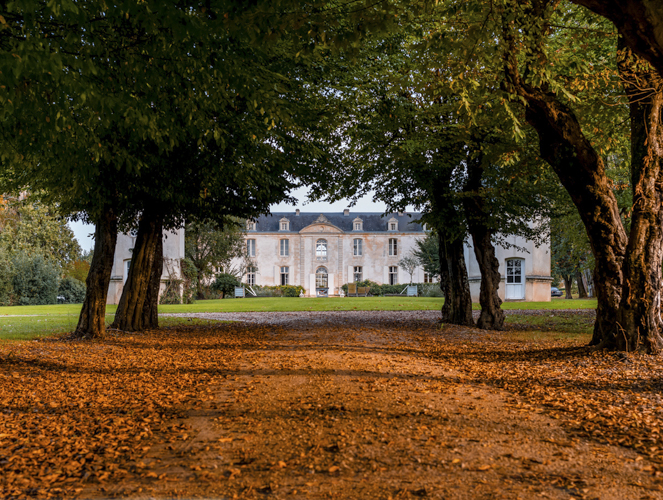
Arriving at this historic domaine is an emotional experience as you drive down a romantic tree-lined avenue to come face to face with a magnificent 16th century château, surrounded by manicured lawns and an ornamental lake, then vines as far as the eye can see stretching over 77 hectares. Since 1990 it has been the home of Yves and Stéphanie Vetelot, who over the years have renovated the château, meticulously cultivated the vineyard and created a state-of-the-art, thousand-barrel cellar under the watchful eye of world-famous oenologist, Michel Rolland. Yves remembers Rolland telling him he had bought an unbelievable terroir, “and we have used wine tourism to the maximum to draw people to our château to fully understand what goes into our marvellous wines.”
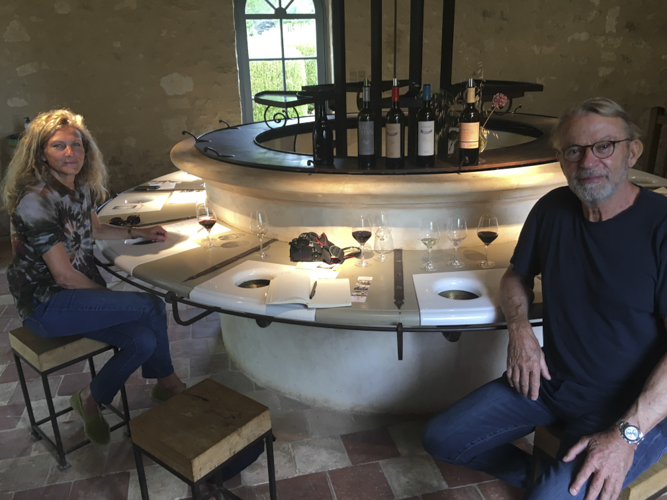
So today, the château’s delicate greenhouse, designed by Gustave Eiffel, is planted with a fragrant olfactive herb and plant garden, while an ancient dovecote has been transformed into a unique tasting room, where carafes mysteriously descend in a metal cage from the roof, and wine experts seated in a circle begin a blind tasting.
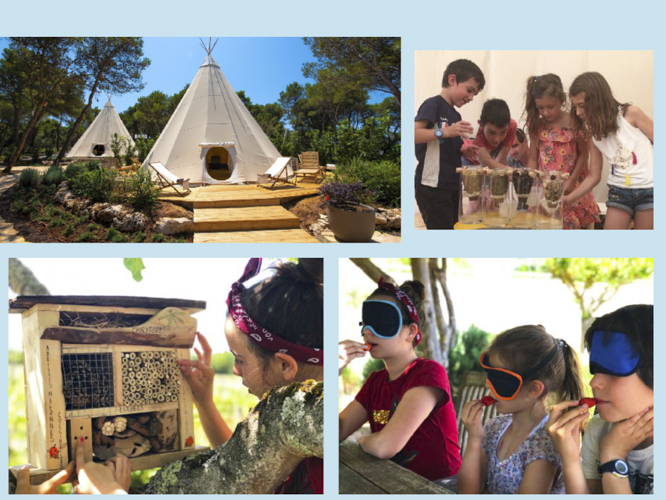
In addition to vineyard tours, picnics and fun after-work aperitifs, there is a unique emphasis on child guests, taking place in fun wigwam tents with educators leading playful but responsible games explaining ecology, sustainable development and the environmental impact of wine. And today, with their children no longer living at home, privileged wine tourists can even rent the Vetelot château as an exclusive place to stay.
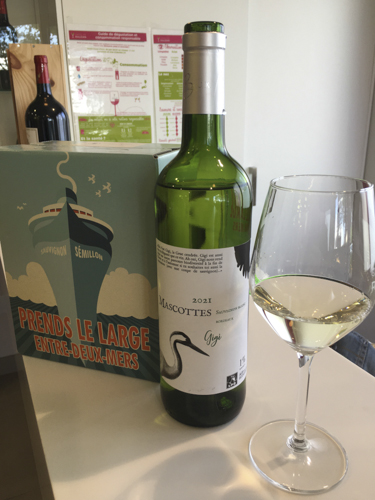
The Entre-deux-Mers region has some of the most active Caves Coopératives in the Bordelais, and Les Caves de Rauzan has distinguished itself from many of its neighbours with a wine tourism programme aimed at promoting biodiversity and sustainability. While the numbers may sound large – 300 vignerons cultivating 4,000 hectares, producing an equivalent of 28 million bottles – Rauzan is very much a friendly, community-orientated cooperative rather than an anonymous big business. While visitors can stop off any time for a free tasting at both their main cellar and two shops, every Friday there is a pop-up café outside the cellar offering an evening aperitif, while their historic event is La Récréation Gourmande, a 6-7 kilometre hike through the vineyards with stop-offs for wine tastings, oysters, musicians and a BBQ grill of classic entrecôte steaks. For the locals, no one misses this, and the Coopérative also actively promotes the charms of the picturesque village of Rauzan with its grand château and the subterranean Grottes Célestines.
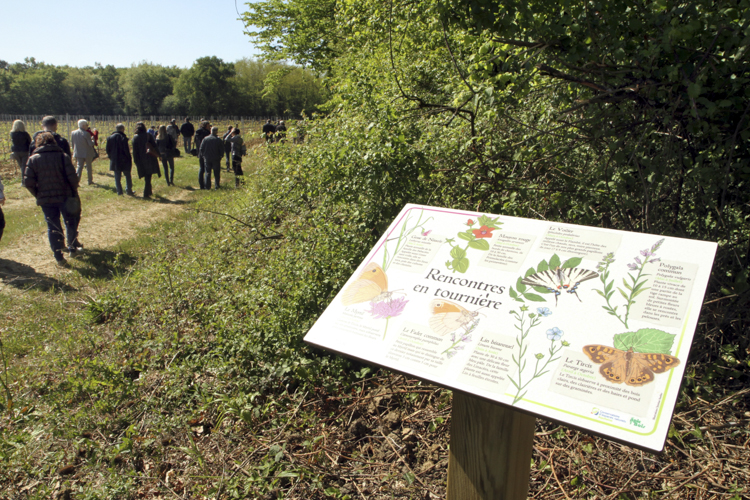
But their most important new initiative is the Parcours de Diversité, taking the visitor on an educative walking tour through the different ecosystems within and surrounding the vineyard. It traverses the properties of half a dozen different vignerons, with informative panels along the way explaining the local biodiversity. The Cave produces essentially Entre-deux-Mers, Bordeaux, Bordeaux Supérieur and Crémant de Bordeaux, with every bottle proudly displaying a label declaring it as Sustainable Wine.
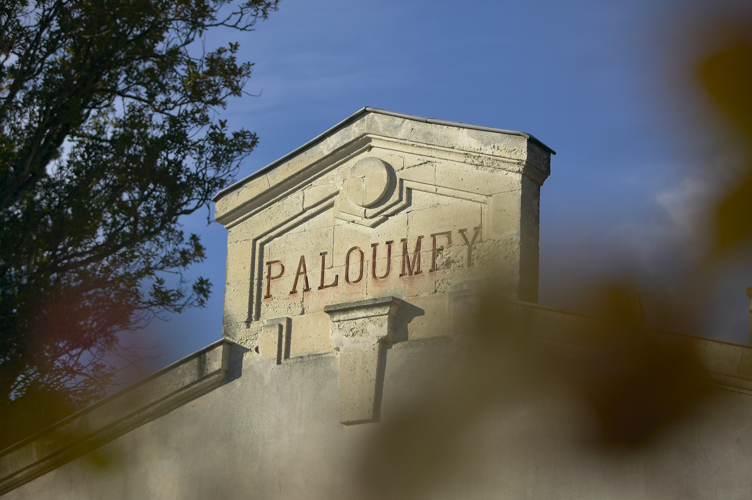
Martine Cazeneuve and her family purchased Château Paloumey back in 1989, and she oversaw not just the replanting of the vineyard and restoration of the château, but the Médoc’s earliest initiatives to attract tourists.
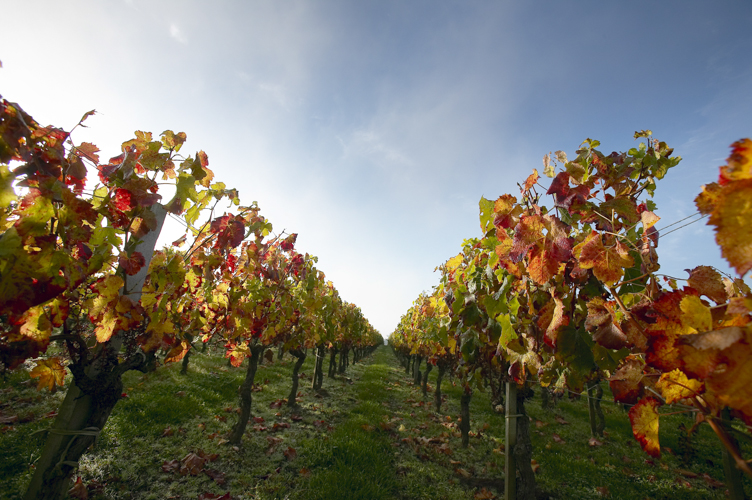
Today, there are some 5,000 visitors a year, attending diverse events like Afterwork en Médoc, a popular evening aperitif with tastings, food trucks and music, Atelier Vendange to experience a slice of life in the day of a harvester, picking and eating the grape, tasting early fermentation from the vat, and of course a convivial lunch, contemporary art installations, tasting workshops and blending experiences. Martine’s son Pierre, is now the exuberant winemaker, and his infectious enthusiasm is best experienced when he takes visitors round on his latest project, ‘Nature et Futur’.
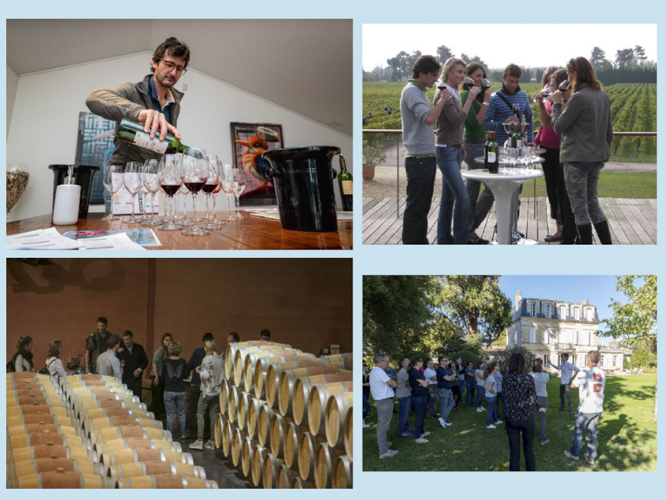
“I would say this is a mix of Slow Tourism and Environmental Awareness,” he excitedly claims, “a theme to make people Look Up, inspired by Leonardo di Caprio’s ecology film, where we explain our eco-stance for the future for Paloumey. During a 45 minute walk through the property we show what we have already done. These are concrete acts like experimenting across 4 hectares of the vineyard, where every 25 vine lines we have dug up two and planted different types of trees – maple, lindens, acacia, Holm oaks. In ten years time there will be a lines of trees completely changing the vignoble’s landscape. When the group comes back to the cellar I show how the roof is now covered with solar panels, enough for self-sufficiency during the day, and who knows maybe we will have enough one day to power electric tractors ourselves. I call it the winemaking of tomorrow”
Château de la Vieille Chapelle
Embark on an adventure to find this hidden jewel, as a narrow road meanders through tiny villages, meadows and vineyards of the Fronsac region, with the car’s GPS apparently leading you to the middle of the Dordogne river.
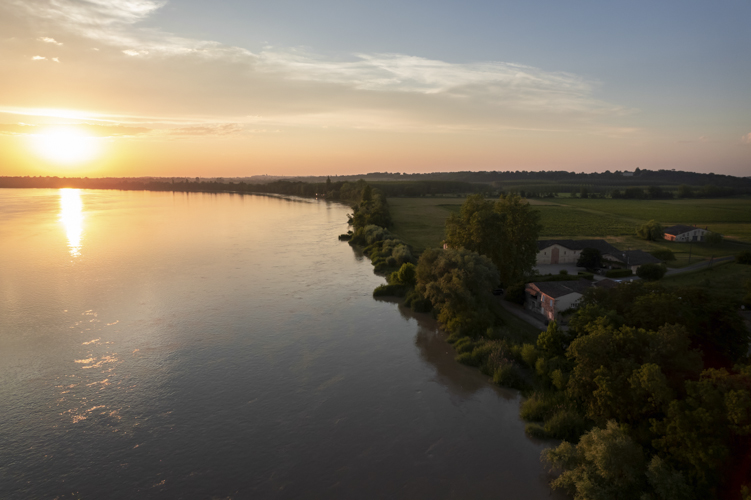
Fortunately, this rambling domaine stops right at the water’s edge. Frédéric Mallier and his wife Fabienne spent 10 years travelling around France looking for the perfect domaine to make wine responsibly and sustainably. Their dream has taken form here around an 11th century Roman chapel, its rustic outhouses converted into B&B rooms, and a single 7 hectare vineyard producing certified organic and biodynamic wine.
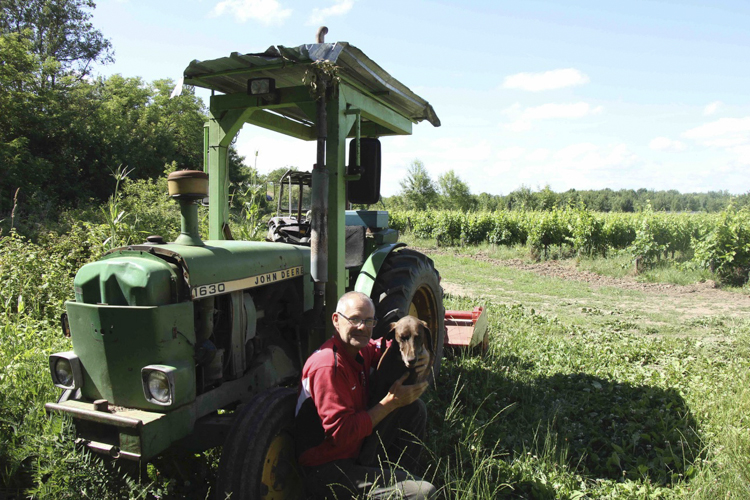
Frédéric explains that, “the estate actually stretches for 22 hectares, with large swathes of forests. For me mixed landscape is crucial for biodiversity, especially as I also make honey. We have a greenhouse to grow vegetables and a nursery for new vine shoots.
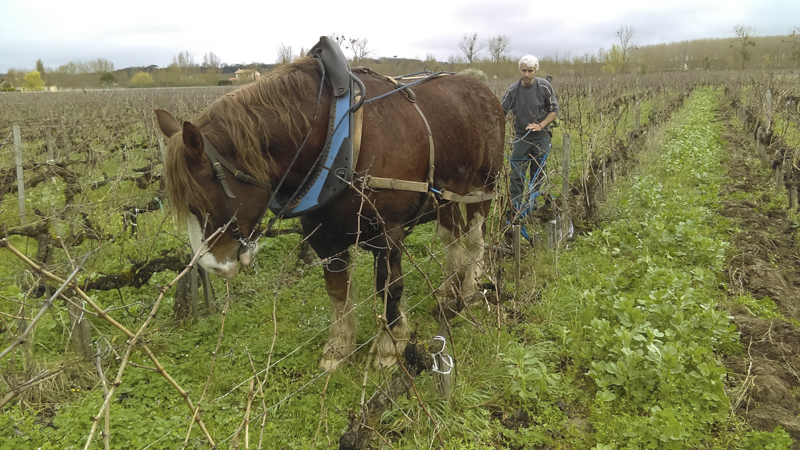
I have planted over a 100 fruit trees, let the forest run wild, and sometimes using a horse to plough the vines.” He is adamant that, “without the B&B revenue we would never have been able to pass to certified bio cultivation, because that automatically means an immediate loss of about 30% of your wine production. And no one can increase the price of their wines by 30% to compensate.”
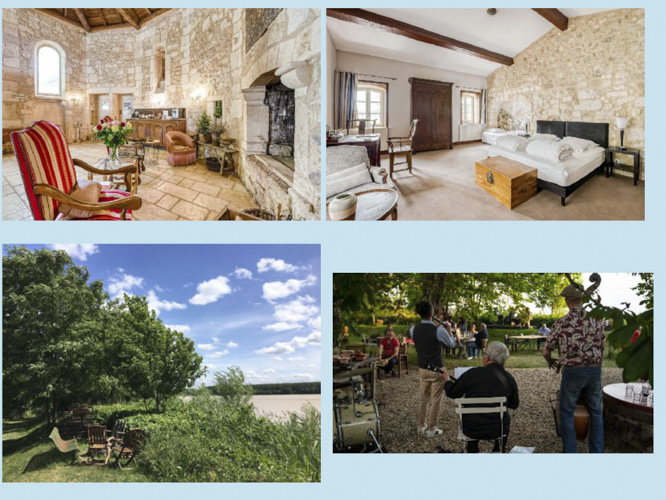
His economic model is far removed from grape monoculture and to create income. Fabienne cooks meals for guests and offers Ayurveda energy massages, and most recently they are hosting a magical outdoor guinguette, Les Amuse-Gueules, promoting their wines, sharing platters of local organic cheeses, vegetables and charcuterie, a barbecue and jazz concerts. It is the perfect occasion to discover Frédéric’s highly original wines; natural cuvées like Amis & Associés made with a unique gigantic 170 year-old pre-phylloxera vine of the forgotten Bouchalés-Merlots grape, or Les Merlots de Baudet, made from a 1940 parcel of Merlot vinified and aged in raw concrete vats.
Driving through the picturesque countryside between the Fronsac and Cadillac Appellations you cannot miss the dramatic façade of the ruined castle of Boutinet.
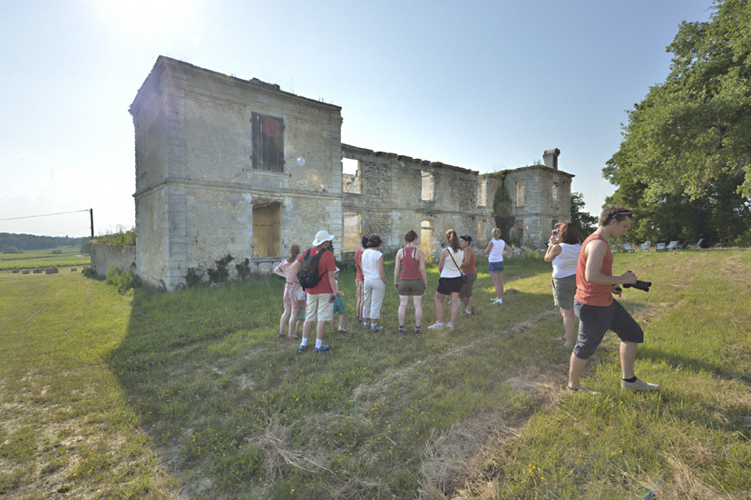
Take the side road that leads to the château and you quickly discover that this grand 18th century building may be in ruins but it is far from abandoned. Carefully tended plots of vines surround the property, and the entrance is marked by a giant white yurt tent, while one wing of the Château has been restored as the home and wine cellar of vigneron Jérôme Depoizier and his wife Nathalie. She explains how, “we met at a winemaking school, both of us ambitious to produce our own wine, our own label. When we bought Boutinet and its 12 hectare vineyard we realised that wine tourism was the one way to achieve this dream, to finance an initial project of 12,000 bottles of our very own bottles.”
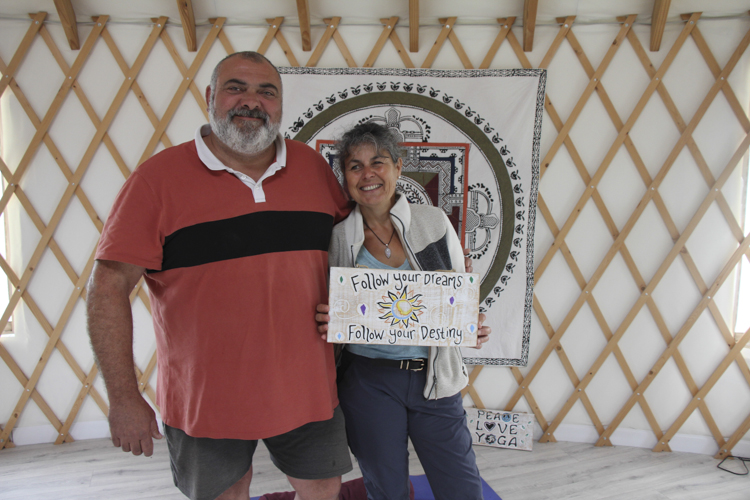
Nathalie was already an experienced educator at Bordeaux’s Ecole du Vin, while Jérôme had followed in his father’s footsteps as a cellar master but had never owned his own vignoble. “The first project was Rando Tapas, a trek through our vineyard, experiencing the whole biodiversity of the estate, followed by a tasting and tapas. We call it Walk, Wine and Dine. Then, to be able to operate year round, we invested in this immense yurt, where we can do wine pairing with products from local farmers, and host events and dinners for 80 people. I also conduct my blending ateliers here as well as classes that combine yoga and wine.” While the bulk of their harvest is still sold to the local Cave Coopérative in the neighbouring village of Villegouge, future plans to convert part of the château into a B&B should allow them to increase production of the wines Jérôme experiments with in their garage cellar.
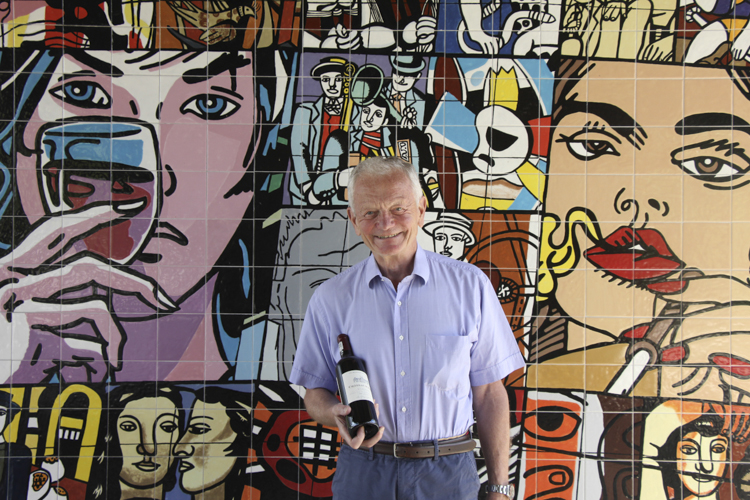
Although the splendour of Château d’Arsac sits perfectly alongside the grand domaines of Margaux, its owner, Philippe Raoux is not a typical Bordeaux vigneron. Arsac may have a distinguished history stretching back to the 12th century, but when Philippe bought the estate in 1986, “everything was abandoned; the château in ruins, only 4 hectares of vines, and somehow the owners had let pass the opportunity to enter the Margaux Appellation when that was created in 1955.
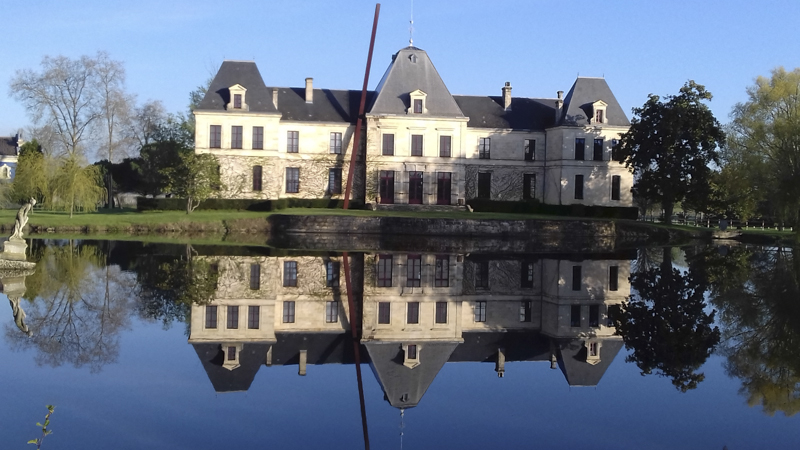
So it has been a long journey, restoring this fabulous manor, recreating an 108 hectare vineyard. And in 1995, we finally took our rightful place in both the Margaux Appellation and Cru Bourgeois Exceptionel. Amazingly, we are the only winery in France to have been upgraded in this way.” But Arsac is not just exceptional for its wines, as Philippe has put it on the world’s art map too as a unique exhibition venue. He tells the story of how, “our adventure began in 1988, when the curator of the fine arts collection of the Peter Stuyvesant Foundation asked us to host a huge exhibition of their works in the château and its grounds. It was a great success, but when it ended and they removed all the artworks, well I felt bare and almost robbed. So I decided to organise our own exhibition each year, alongside putting aside a budget of 1 franc per vine to fund our own permanent collection. Well, we have 600,000 pieds de vignes, so it gave me a budget of €100,000 a year, and today the collection consists of over 30 monumental sculptures exhibited in our Jardin des Sculptures, across the Château’s cellar, vineyards and park.”
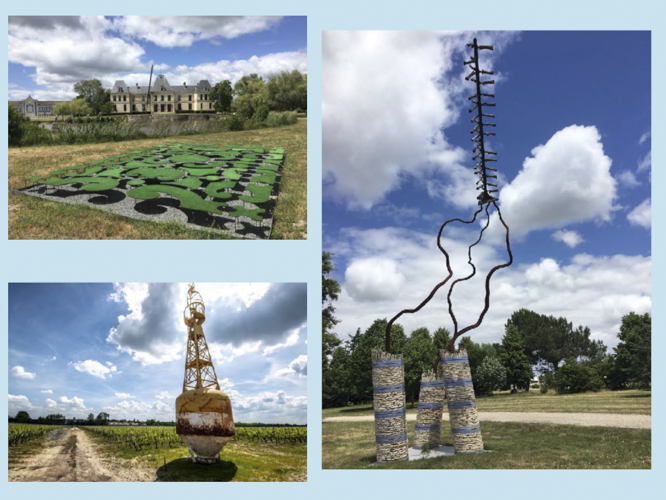
In addition to this unique Art and Wine tour, visitors can now also experience Songs of Arsac, a musical sound and light extravaganza screened in the barrel-ageing cellar, recounting the 1,000 year history of the château.
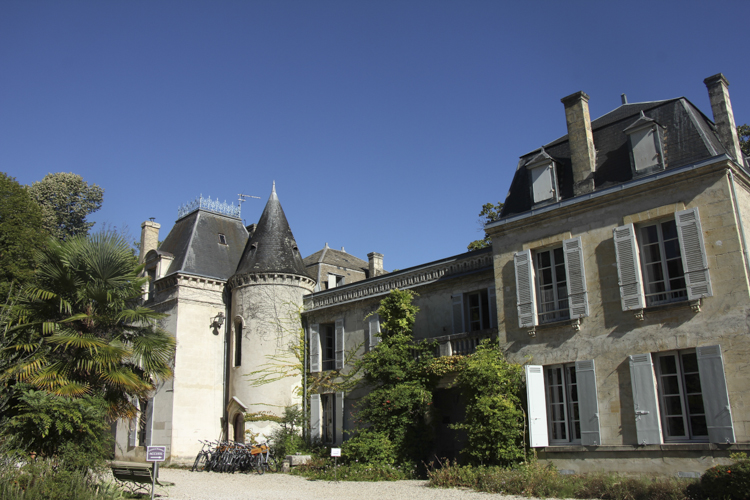
In the heart of the Pessac-Léognan Appellation, this fairytale château is set in a romantic landscaped park that has been in the hands of Stella Puel’s family since 1898. Producing predominantly elegant, red organic wines, the 10 hectare vineyard is surrounded by a natural biodiversity of woods, meadows, orchards and marshy wetlands.
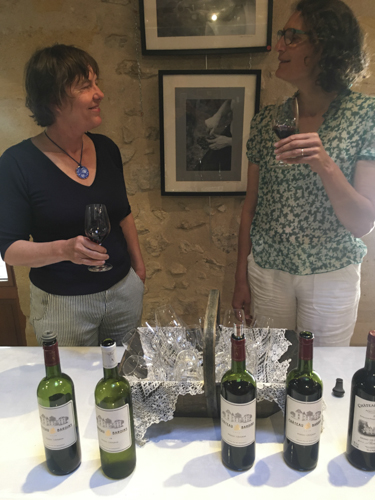
Stella is a fifth generation vigneronne and recounts how, “we have always welcomed visitors here since the day I took over 25 years ago, when I just wanted to be able to meet wine lovers personally over a tasting in the cellar. Today this part of our business has expanded enormously, and our numerous projects are handled by my close collaborator, Pascale Laroche.
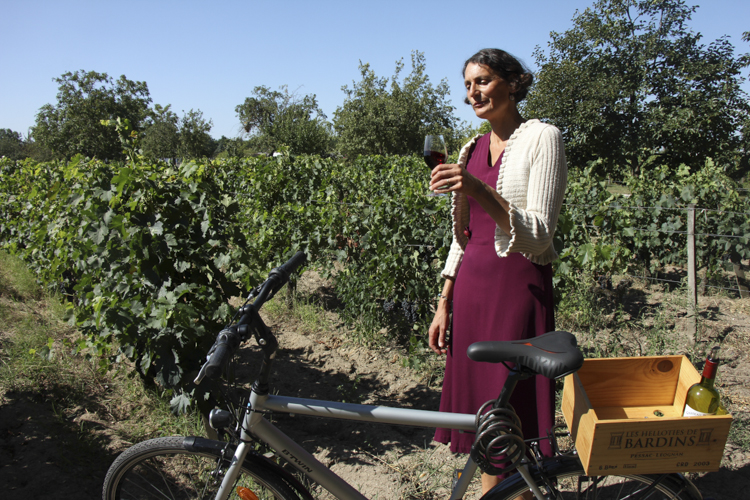
She is a sporty wine lover and offers a guided tour by bike that begins here, carrying on past half a dozen Pessac-Léognan châteaux before returning for a tasting. We also have tours of the estate by foot, including orienteering games and a wine quiz, and if it rains, well everyone decamps to the cellar and continues with a digital game using iPads. Pascale also runs blending ateliers, with regular art exhibitions in the cellar. And I organise musical events 3 or 4 times a year in the château, concerts that have featured French and international musicians, performing piano recitals, chamber music, lyric performances, jazz bands and slam poets. The venue is right here in the living room of my home for a limited audience of 50 people, followed by a tasting afterwards. So we may have a pianist here who the week before was performing in Carnegie Hall in New York. I think they know they are well treated when they hold a concert in Château Bardins.”
Where to eat
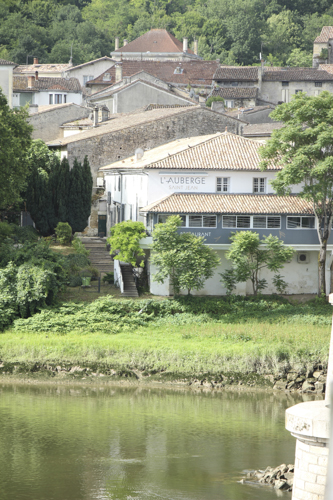
In a picture postcard location by a bend on the Dordogne river, this ancient stone auberge has been tastefully renovated while the refined cuisine of chef Thomas l’Hérisson is recognised by a prestigious Michelin star. The other side of the bridge, stop off at Cabestan, where David Durand, one of the Dordogne’s last professional fishermen, sells jars of the Lamprey eel that he catches in the river, cooked in a delicious rich red wine sauce, à la Bordelaise.
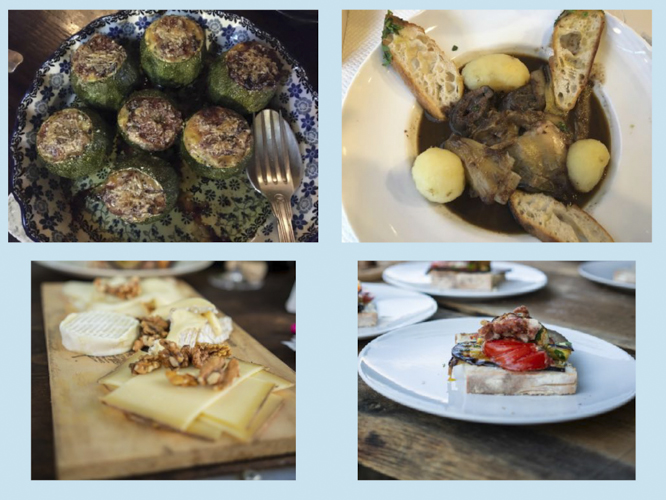
This romantic Jardin is the garden restaurant of Château Petit Faurie de Soutard a 200 year-old winery just outside the village of Saint-Emilion. The sunny terrace overlooks both vineyards and a vegetable garden where chef Stéphane Casset grows ingredients for his recipes like tuna served with a green pepper gazpacho and grilled fennel
Where to stay
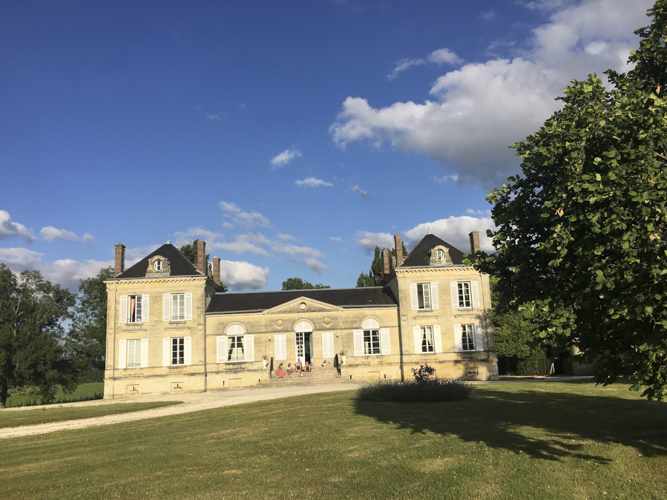
Just outside the wine making town of Fronsac, this magnificent 18th century chateau is surrounded by an immense vineyard, visible from miles around by its giant 12 metre high silver cockerel statue, Le Coq. Cottages by the cellar have been tastefully transformed into cosy B&B accommodation, with a spa and jacuzzi, wine tasting and casual dining area. For a really special occasion, it is possible to rent the entire château itself.
What to do
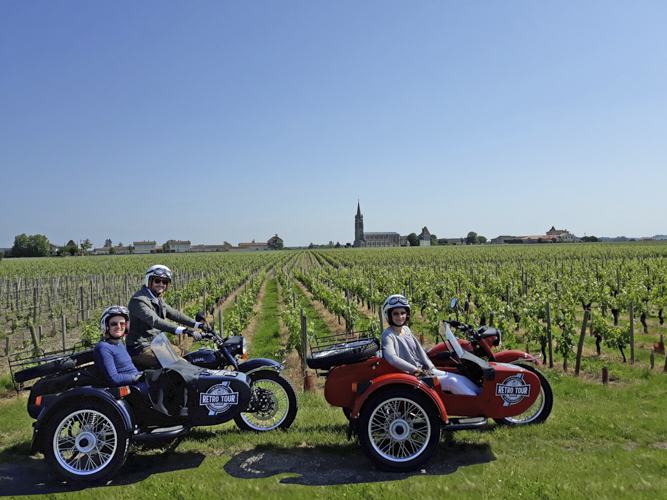
For wine tourists looking for a quirky, highly original guided tour around the vineyards of Bordeaux, rather than heading off independently, it is impossible to beat Rétro Tour who drive adventurous visitors in the sidecar of their retro motorbikes, discovering the chateaux of the Médoc and Saint-Emilion.
